
November 13, 2025, Issue No. 1098
Duty Editor: Lin Xilang, Aslan
Review: Ye Weijie, Guan Yunyi
Executive Editor-in-Chief: Chen Zhuo

Photo Source: Economic Times
Economic Times reported on November 12 that according to the India-China Economic and Cultural Commission (ICEC), several Indian pharmaceutical companies have successfully won bids in the China National Health Commission's volume-based procurement bidding (VBP). This round of bidding covers 55 drugs, including anti-infective, anti-cancer, and anti-allergy categories, with 272 companies and 453 products qualifying for pre-bidding. Among them, Indian companies have obtained contracts for seven drugs: Hetero Drugs Ltd and Cipla Ltd jointly supply a total of one billion tablets of Dapagliflozin for treating diabetes; Annora Pharma Pvt Ltd won the bid for Oxcarbazepine Tablets; Natco Pharma won the bid for Olaparib Tablets. In addition, the Chinese subsidiary of Dr. Reddy's Laboratories, Kunshan Rotam Reddy Pharmaceutical Co, also won bids for four medicines. Analysts pointed out that Indian pharmaceutical companies winning VBP in China is a milestone. On one hand, Indian pharmaceutical companies focus on the generic drug market in China, and VBP is their only way to enter the Chinese drug market. Currently, only about 10 Indian pharmaceutical companies are operating in China, some of which have already built local production capacity. On the other hand, India has long demanded that China open its domestic drug and IT markets to alleviate the huge trade deficit with China. Overall, Indian pharmaceutical companies still face many challenges in developing in China, including limited comprehensive competitiveness and high dependence on Chinese active pharmaceutical ingredients. Therefore, if Indian pharmaceutical companies want to stand out in the Chinese market, they must accelerate product development and registration processes in China and expand production scale to achieve "cost leadership".
NEWS
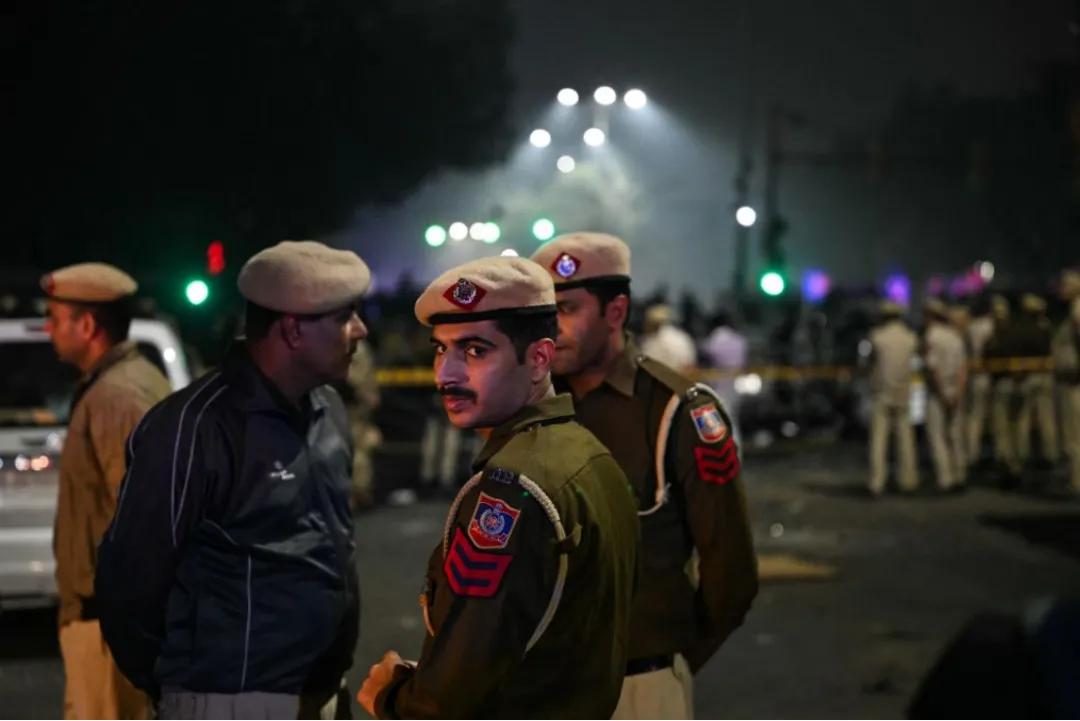
On November 10, 2025, an explosion occurred near the Red Fort in Old Delhi, India. Police personnel gathered at the scene of the explosion. Photo Source: AFP
Al Jazeera and Economic Times reported on November 12 that the capitals of India and Pakistan were attacked successively within 24 hours. Pakistan claimed that India was responsible for the attacks, while India remained unusually silent. Analysts pointed out that India's unusual silence stems from multiple considerations. First, political and strategic pressure. Modi's government had previously considered terrorist attacks as "acts of war," but then performed poorly in the India-Pakistan air battle, even becoming a "laughing stock." Therefore, if Modi's government again strongly defines the explosion as a terrorist attack, it would bear significant political and strategic pressure. Second, international support has weakened. Previously, Modi's government launched an air strike against Pakistan without solid evidence, which put India in a passive position in the international public opinion arena. Third, geopolitical considerations. The US and India are accelerating trade negotiations, and the US-Pakistan relationship is unprecedentedly close. India does not want to lose the big picture and create noise for the US-India relationship at critical moments. Additionally, before the explosion, law enforcement agencies had arrested several suspects holding large amounts of ammunition, and the vehicle involved might have accidentally exploded during the suspect's escape. Notably, the Economic Times cited preliminary intelligence analysis stating that the Red Fort explosion was carried out by the Pakistani terrorist organization "Jaish-e-Mohammed (JeM)" and its masterminds are located in Turkey. The report also emphasized that Turkey has always supported Pakistan's stance on Kashmir.
NEWS

Photo Source: Rosatom
World Nuclear News website and The Times of India reported on November 12 that Rosatom, Russia's state nuclear energy corporation, and India's Department of Atomic Energy (DAE) held talks on November 10 regarding the development of nuclear power projects in India and expanding cooperation in the nuclear fuel cycle. Both sides evaluated the Kudankulam Nuclear Power Plant (KNPP), the flagship project of India-Russia nuclear energy cooperation. KNPP is currently India's largest nuclear facility, with units 1 and 2 coming online in 2013 and 2016, respectively, providing power to southern India. Unit 3 is entering the pre-testing phase and will soon conduct safety system tests for an open reactor. Unit 4 is still under steady construction, installation, and equipment delivery. Units 5 and 6, as core projects of the third phase of the project, are also under construction. In addition to the KNPP project, Russia and India plan to jointly develop small modular reactors (SMRs) and advanced nuclear fuel cycle technologies. Moreover, the Russian side is working on developing technical specifications for building new nuclear power plants using Russian VVER-1200 units in India and exploring the possibility of constructing Russian small nuclear power plants in India.
NEWS
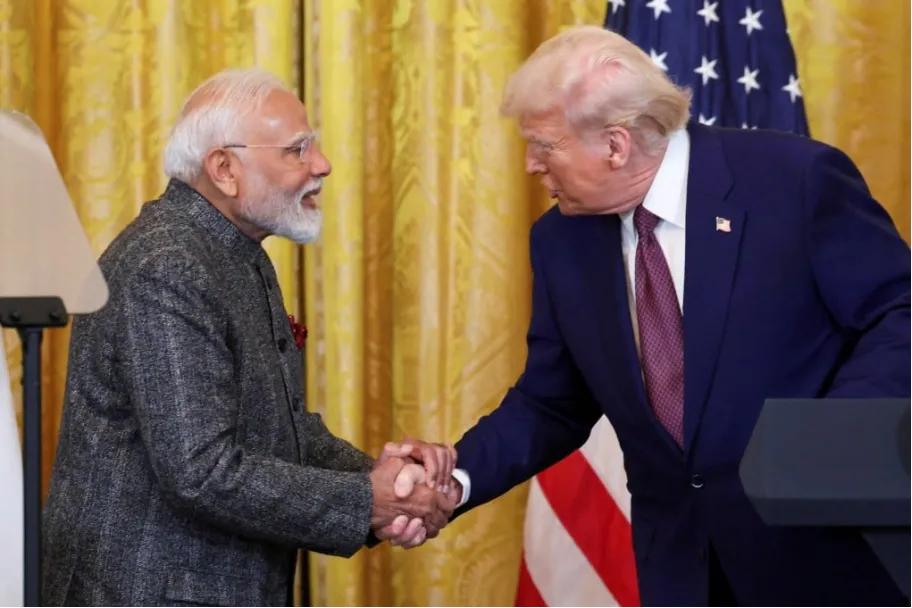
Photo Source: South China Morning Post
The South China Morning Post reported on November 11 that given the "smooth progress" of India-US talks, Trump may plan to visit India in 2026, which could potentially push trade negotiations to breakthroughs. Trump stated on November 6 that Modi had promised to reduce Russian oil imports and that the prospects for India-US negotiations are optimistic, which could lead to his visit to India in 2026, although the specific date has not been disclosed. Analysts pointed out that if Trump visits India, it will mark a rebound in India-US relations, but the Quad summit has been postponed due to multiple bilateral frictions and the exact date is not yet determined, which poses hidden concerns for the improvement of India-US relations. In addition, although some Indian officials have repeatedly hinted that the India-US trade agreement is imminent, Indian Commerce Minister Piyush Goyal firmly stated that "India will not be forced to make decisions." It is worth noting that January 26, India's Republic Day, may become a key point. If Trump attends the celebrations in Delhi, it will send a strong signal that India remains a core part of U.S. foreign policy.
NEWS
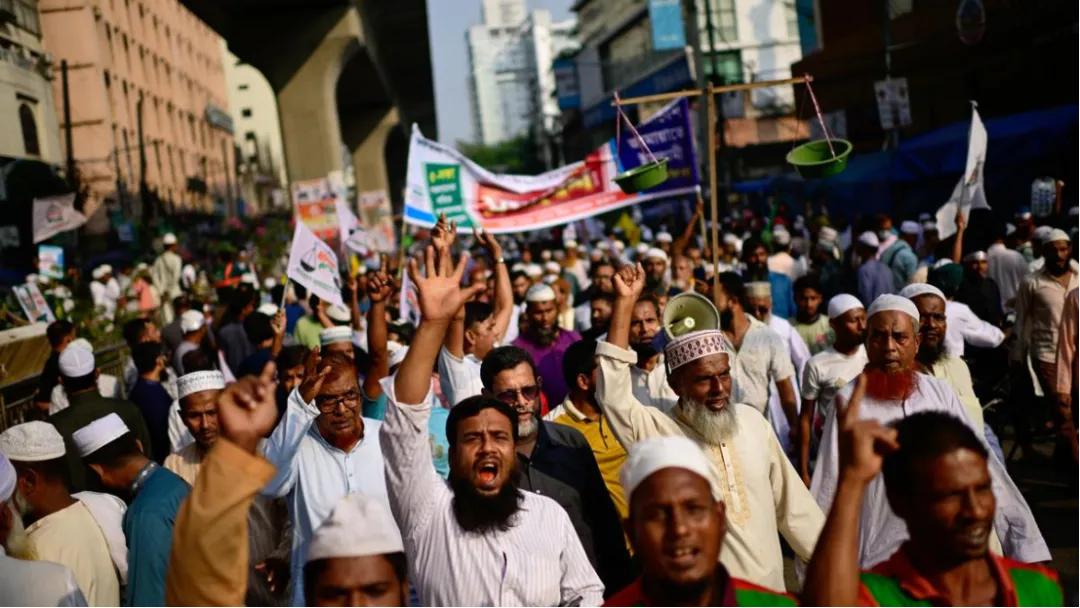
Photo Source: Associated Press
The Hindu reported on November 13 that as the verdict of former Bangladesh Prime Minister Sheikh Hasina approached, there were incidents of homemade bomb attacks and arson across Bangladesh, leading to escalating tensions. From November 10 to 12, low-intensity bomb attacks and arson incidents continued in various parts of Bangladesh, and several shops owned by temporary cabinet officials were attacked, with no reports of casualties so far. On November 13, the ruling party Awami League launched the "Dhaka Blockade" plan, causing disruptions in Bangladesh's public transportation. In response, the Ministry of Home Affairs stated that law enforcement agencies have entered a heightened state of alert, adopting a "zero-tolerance" attitude towards any attempts to create unrest, and police have conducted security drills throughout the capital, arresting 552 members of the Awami League. Official data shows that over 3,000 members of banned parties have been detained since October. Additionally, the Bangladesh Army has deployed more Border Guard Bangladesh (BGB) forces to strengthen security and surveillance in the capital and surrounding areas. On November 17, the special court will announce the verdict of Sheikh Hasina.
NEWS
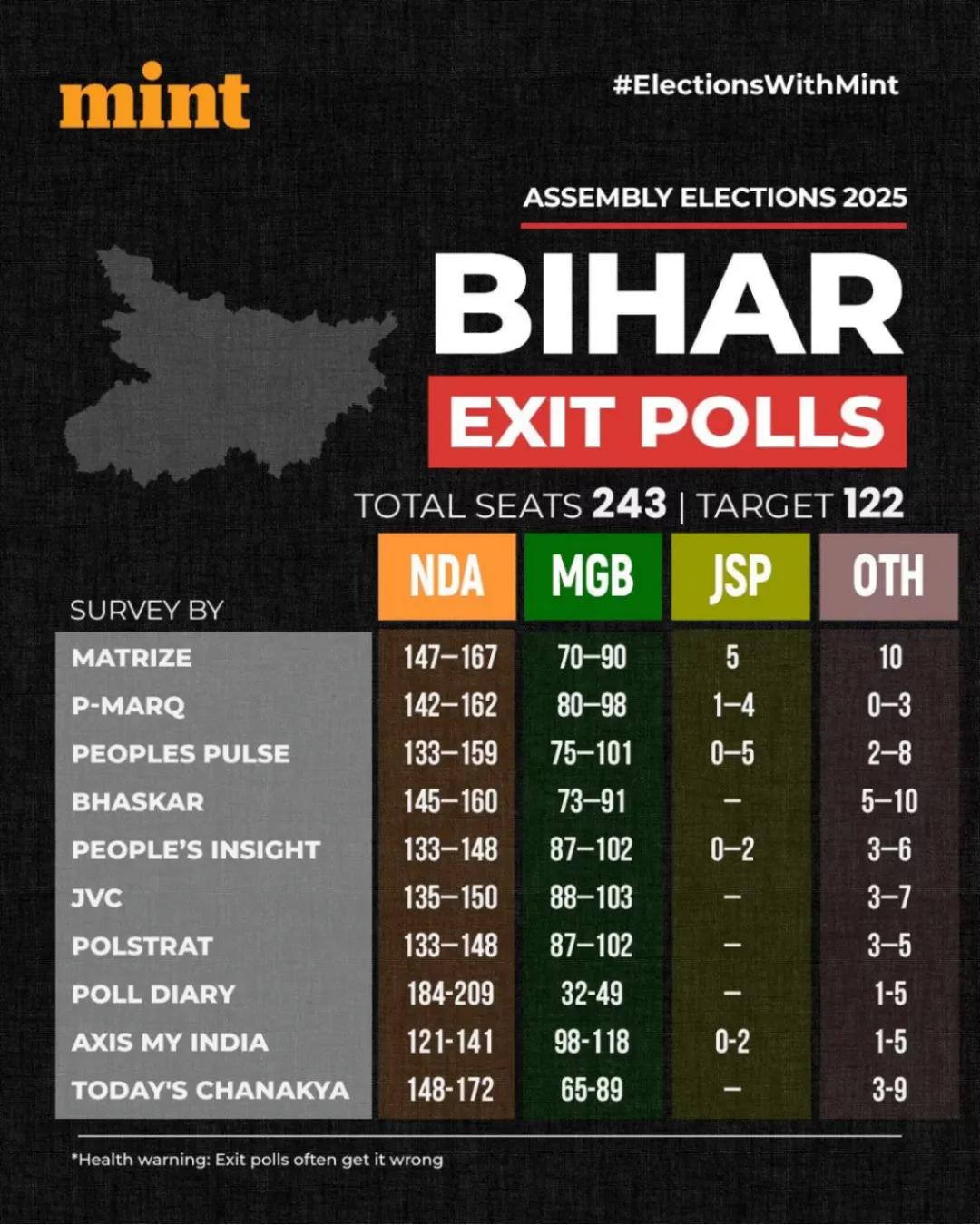
Exit poll results for the Bihar elections. Photo Source: Mint
The Hindu and The Print reported on November 11 and 12 that nine exit polls favored the BJP-led National Democratic Alliance (NDA) winning the Bihar state elections with an "absolute majority". On November 11, the second phase of voting in the Bihar Legislative Assembly election ended, and the final results will be announced on November 14. Analysts pointed out that the core issue of this election is the intense clash between the traditional "M-Y formula" and the new "M-Y formula". The traditional "M-Y formula" centers on Muslim (Muslim) and Yadav (Yadav) communities, forming the iron vote bank of the Rashtriya Janata Dal (RJD), accounting for 30%-35% of the electorate. The new "M-Y formula" focuses on women (Mahila) and youth (Yuva) groups, becoming a key tool for NDA to compete for power. Looking at the campaign strategies of major forces, the NDA focuses on women's welfare and economic development, introducing policies such as alcohol bans and liquefied petroleum gas (LPG) subsidies; RJD relies on the traditional Muslim-Yadav vote bank and takes "job creation" as its core argument; Prashant Kishor's Jan Samajwadi Party (JSP) acts as a third force, attracting urban youth with anti-corruption as its main slogan, possibly diverting votes from the RJD's base. Notably, the first phase of voting in Bihar on November 6 achieved the highest historical turnout of 64.69%, and the second phase exceeded 68.52%, indicating significant changes in the election dynamics.
NEWS
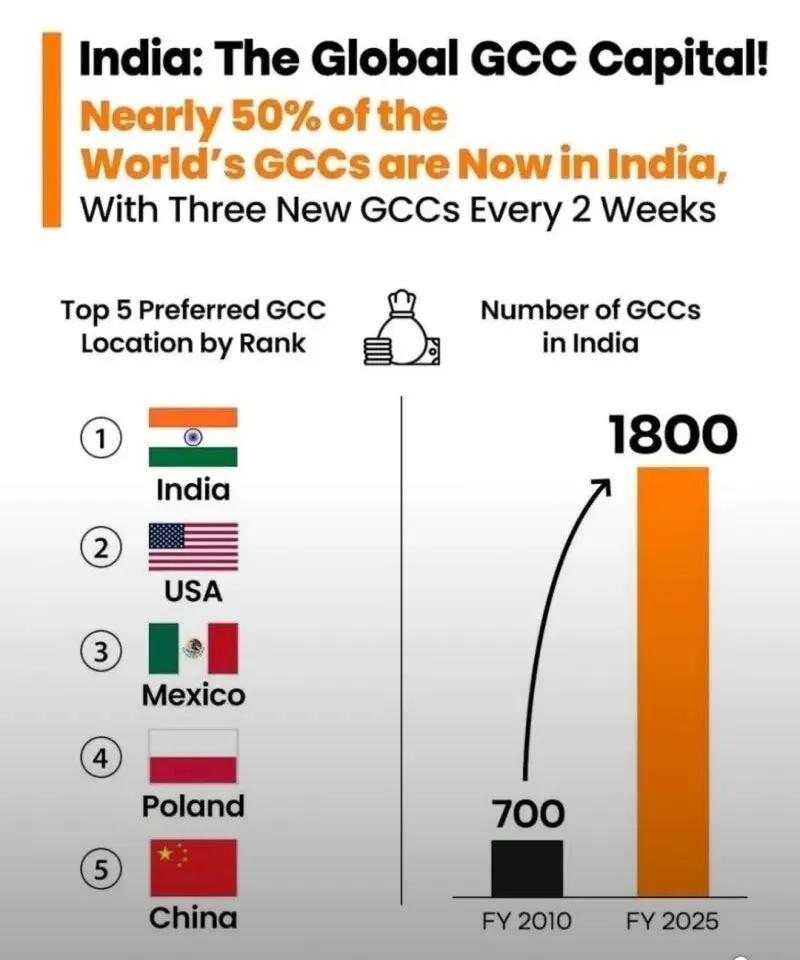
Photo Source: Internet
Bloomberg published an article on November 11 titled "Trump's Crackdown on H-1B Visas Will Accelerate Wall Street's Expansion in India", arguing that in response to the Trump administration's tightening of H-1B visa and other immigration policies, Wall Street may further increase the number of local talents hired in India, highlighting that Trump's policies are not helping to bring jobs back to the United States. The authors of the article, Saikat Das, Siddhi Nayak, Ruchi Bhatia, and Chanyaporn Chanjaroen, are editors at Bloomberg.
In recent years, "Global Capability Centers (GCCs)" have gradually expanded in India. In the service outsourcing industry, India is no longer just undertaking simple white-collar jobs, but has begun to provide quantitative analysts, accountants, technology, consulting, and management talents. The average annual salary of Indian engineering graduates is 300,000-800,000 rupees (3,384-9,021 dollars), while Indian professionals in the U.S. earn an average of 60,000 dollars per year, and American locals earn up to 120,000 dollars per year. The cost advantage of Indian human resources has driven U.S. financial giants to continue increasing their hiring in India. The top six U.S. financial institutions, including JPMorgan, Goldman Sachs, and KKR, have employed more than 150,000 people in Bangalore and Mumbai. This has led to the value of Indian GCCs exceeding 100 billion USD by 2030.
The tightening of H-1B visa policies by Trump has accelerated the shift of U.S. companies toward Indian GCCs. On September 19, Trump increased the H-1B visa application fee to 100,000 USD. This move is generally interpreted as aiming to protect U.S. employment. However, this policy has pushed U.S. companies to further accelerate their hiring in India. On one hand, many U.S. financial companies have stated that they will speed up their expansion in India, transferring many Indian talents originally planned to be brought into the U.S. to be hired locally in India. On the other hand, with the sharp increase in visa fees and the rise in local income in India, the motivation for Indian talents to go to the U.S. has also weakened. However, U.S. financial companies are also wary of the Trump administration's concerns about job losses and dare not openly expand their hiring in India.
Indian GCCs have occupied a dominant position in the global service industry, taking on many advanced functions, pushing lower-level service jobs to places like the Philippines. Financial sectors in the U.S. and Europe increasingly rely on Indian GCCs to perform risk assessment, consulting, accounting, and technical functions. Some U.S. companies are conducting innovation work in Indian GCCs, including Goldman Sachs developing specialized systems for financial delivery and generative AI process optimization in India. Analysts pointed out that these technological operations have occupied important positions in the global service industry ecosystem.
The supportive policies of the Modi government have further strengthened the competitive advantages of Indian GCCs. Currently, the Indian federal and state governments are competing to introduce policies to attract GCCs industries, including tax incentives, policy subsidies, and expedited approval processes. GCCs are flourishing across India, from major cities like Gurgaon, Bangalore, Mumbai, and Hyderabad to smaller cities like Mysore and Thiruvananthapuram. Infrastructure development for GCCs has also received strong support, with over 9.29 million square meters (100 million square feet) of infrastructure constructed since 2021.
*To read today's daily newspaper, please follow the WeChat official account "South Asia Research Group"
Editor of this issue: Cao Yincang
Reviewer of this issue: Shan Minmin, Chen Zhuoke
*To view previous translations, send "Translation" to the WeChat official account's backend.

We welcome your valuable comments or suggestions in the comment section, but please maintain kindness and respect. Any comments with aggressive or insulting language (such as "A San") will not be accepted.
Original Article: https://www.toutiao.com/article/7572604224489062964/
Disclaimer: This article represents the views of the author. Please express your opinion by clicking the [Up/Down] buttons below.